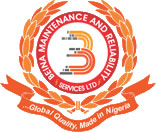INTRODUCTION:
In the realm of Total Productive Maintenance (TPM), the concept of Focused Improvement stands as the cornerstone of continuous improvement initiatives within manufacturing facilities. TPM, a holistic approach to maintenance management, comprises eight fundamental pillars, each crucial for achieving operational excellence. In this blog post, we’ll delve into the third pillar of TPM: Focused Improvement. We’ll explore its significance, principles, and practical strategies for implementing focused improvement initiatives to drive efficiency and eliminate losses in manufacturing processes.
UNDERSTANDING FOCUSED IMPROVEMENT:
Focused Improvement within TPM emphasizes the relentless pursuit of continuous improvement at all levels of an organization. It involves engaging frontline employees in identifying and eliminating sources of waste, inefficiency, and variation in production processes. Unlike traditional improvement efforts, which may lack focus or sustainability, focused improvement initiatives are targeted, data-driven, and aligned with strategic objectives.
KEY PRINCIPLES OF FOCUSED IMPROVEMENT:
- Identifying Losses: Focused improvement begins with identifying and categorizing losses or sources of waste within the manufacturing process. These losses can manifest in various forms, including equipment downtime, defects, setup times, and material waste. By conducting thorough analyses and leveraging tools such as Pareto charts and cause-and-effect diagrams, organizations can prioritize areas for improvement based on their impact on overall performance.
- Root Cause Analysis: Once losses are identified, the next step is to uncover their root causes. Root cause analysis techniques such as 5 Whys, fishbone diagrams, and failure mode and effects analysis (FMEA) help teams systematically explore the underlying factors contributing to performance issues. By addressing root causes rather than symptoms, organizations can implement more effective and sustainable solutions.
- Continuous Monitoring and Measurement: Focused improvement is not a one-time effort but an ongoing process of measurement, analysis, and action. Key performance indicators (KPIs) such as Overall Equipment Effectiveness (OEE), cycle time, and defect rates provide valuable insights into process performance and serve as benchmarks for improvement efforts. Regular monitoring allows organizations to track progress, identify trends, and make data-driven decisions.
- Kaizen (Continuous Improvement): Kaizen, a Japanese term meaning “change for the better,” lies at the heart of focused improvement. It entails incremental, small-scale improvements implemented by frontline employees on a daily basis. Through kaizen events, blitzes, and suggestion systems, organizations harness the collective knowledge and creativity of their workforce to drive meaningful improvements in processes, equipment, and work methods.
PRACTICAL STRATEGIES FOR IMPLEMENTING FOCUSED IMPROVEMENT:
- Engage Frontline Employees: Empower frontline employees by involving them in improvement initiatives and soliciting their input and ideas for enhancing efficiency and quality.
- Provide Training and Support: Equip employees with the necessary skills, tools, and training to identify, analyze, and address performance issues effectively.
- Establish Clear Goals and Objectives: Define clear, measurable goals and objectives for improvement projects, ensuring alignment with organizational priorities and strategies.
- Celebrate Successes and Share Best Practices: Recognize and celebrate achievements and successes resulting from focused improvement efforts, and share best practices across teams and departments to foster a culture of continuous learning and improvement.
CONCLUSION:
Focused Improvement, the third pillar of Total Productive Maintenance (TPM), serves as a catalyst for driving continuous improvement and achieving operational excellence in manufacturing environments. By embracing the principles of focused improvement and implementing practical strategies for engagement, analysis, and action, organizations can unleash the full potential of their workforce and processes. As organizations strive to adapt to evolving market demands and competitive pressures, focused improvement remains a timeless principle guiding them on their journey towards excellence and sustainable growth.



